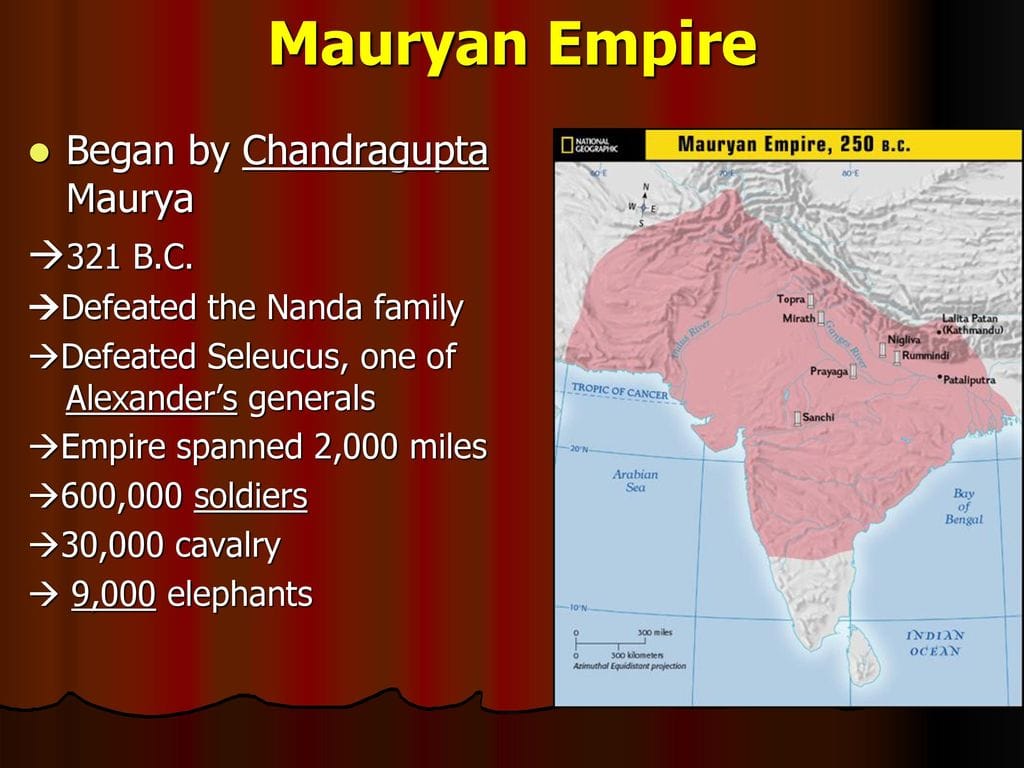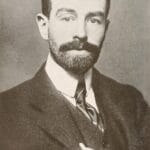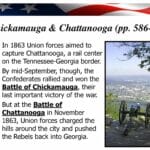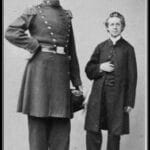Imagine the grandeur of the Mauryan Empire, a force that dominated ancient India. At its heart was an army of unparalleled strength and strategic brilliance. This guide delves into the fascinating world of the Mauryan military, exploring the ranks, tactics, and captivating stories that made these warriors legendary. Prepare to uncover the secrets behind one of history’s most impressive military forces.
Power in Diversity: The Soldiers of the Mauryan Ranks
The Mauryan army was far from a homogenous force. Their strength lay in their diverse makeup, a blend of skilled warriors from various backgrounds united under a single banner:
Kshatriyas: The Elite Guard: Born into warrior families, the Kshatriyas were the seasoned professionals of the Mauryan army. Their lifelong training and dedication formed the bedrock of the military structure.
Mercenaries: Swords for Hire: The Mauryans weren’t afraid to employ skilled fighters from beyond their borders. Lured by promises of wealth and glory, these mercenaries brought unique fighting styles and expertise, adding another layer of complexity to the army’s arsenal.
Freebooters: Soldiers of Fortune: Driven by the thrill of battle and the allure of riches, the freebooters were the wild cards of the Mauryan army. While perhaps less disciplined than their counterparts, their daring and unpredictable nature likely proved valuable in specific situations.
Guild Troops: Strength in Numbers: Beyond individual warriors, entire guilds of skilled craftsmen and tradesmen would sometimes contribute to the Mauryan ranks. While not professional soldiers, their sheer numbers provided crucial support during times of war.
This diverse mix, though potentially challenging to command, resulted in a dynamic and adaptable force. Guiding this intricate web of warriors were skilled commanders who orchestrated the movements of infantry, cavalry, the awe-inspiring war elephants, and swift chariot units. Managing such a varied army undoubtedly required exceptional leadership and strategic acumen.
Beyond Brute Force: The Keys to Mauryan Military Dominance
The Mauryan army’s success stemmed from more than just its size. It was a combination of several crucial factors:
Military Masterminds: Mauryan commanders weren’t just courageous warriors; they were strategic thinkers. They likely dedicated countless hours refining tactics and siege warfare techniques, constantly seeking an advantage over their adversaries. This commitment to innovation kept the Mauryan army ahead of its time.
Discipline and Order: The Mauryans understood that a large, diverse army could only function effectively with a clear structure. They implemented a strict chain of command and rigorous training regimes to ensure every soldier, from seasoned Kshatriya to newly recruited freebooter, understood their role. This created a unified and efficient fighting force.
Sheer Strength: Numbers undeniably played a role. The Mauryan army was vast, and its strategic alliances further amplified its power. This overwhelming strength, coupled with innovative tactics and unwavering discipline, made them a formidable force on the ancient battlefield.
The Backbone of Empire: The Soldier’s Role
The soldiers of the Mauryan Empire were more than just instruments of war; they were integral to the very fabric of the empire:
Chandragupta’s Ascent: Chandragupta Maurya’s rise to power would have been impossible without the unwavering loyalty and military prowess of his army. They were the instrument of his ambition, helping him overthrow the Nanda dynasty and establish the Mauryan Empire.
Guardians of the Realm: Once the empire was established, the soldiers fiercely defended its borders and expanded its territories. They acted as a shield, protecting the empire’s prosperity, and a spear, extending its reach across the Indian subcontinent.
Path to Advancement: Military service wasn’t solely an obligation; it was an opportunity. It offered a path to social mobility, allowing individuals to rise through the ranks based on bravery and skill on the battlefield.
An Enduring Legacy: The Mauryan Military’s Impact
The legacy of the Mauryan military extended far beyond the empire’s decline:
Inspiration for Future Empires: Mauryan military innovations, particularly in areas like siege warfare and the use of war elephants, continued to influence the strategies of later Indian kingdoms. Their tactics helped shape the course of warfare in the region for centuries to come.
A Mark on Military History: The Mauryans left an indelible mark on military history, demonstrating the power of a well-organized, diverse, and strategically innovative army. Their legacy continues to intrigue historians and military strategists today.
The Human Element: Beyond the Legends
It’s easy to view ancient soldiers as faceless figures in history books, but they were individuals with families, beliefs, and aspirations. While their individual stories may be lost to time, we can envision their daily routines, the hardships they endured, and the camaraderie they shared. Like soldiers throughout history, they undoubtedly experienced fear and courage, loss and triumph.
By exploring this human side of the Mauryan army, we gain a deeper appreciation for the sacrifices made in building and maintaining an empire. Although much remains shrouded in mystery, ongoing research continues to shed light on the lives of these ancient warriors, reminding us that behind every grand empire stood individuals who fought, bled, and ultimately shaped the course of history.
How Many Soldiers Did the Mauryan Empire Have?
The sheer size of the Mauryan army has captivated historians for centuries. While pinning down exact numbers remains a challenge, ancient texts and accounts offer tantalizing clues, suggesting a force of staggering scale. Imagine an army hundreds of thousands strong, a testament to the empire’s power and reach!
Legend claims that Emperor Chandragupta Maurya, the founder of the Mauryan dynasty, marched with a force of 600,000 infantry, 30,000 cavalry, and an astonishing 9,000 war elephants! This mighty force allowed him to conquer Magadha, a powerful kingdom in eastern India, and lay the foundation for his empire.
The Mauryan army’s strength wasn’t solely about numbers; it was about organization and diversity. This was a well-oiled machine, with each part playing a critical role. Let’s break down the key components:
Kshatriyas: These professional soldiers, rigorously trained and bound by a warrior code, formed the backbone of the army.
Mercenaries and Freebooters: Hired from various regions, these skilled warriors brought unique skills and experience to the army, adding to its versatility.
Essential Support: No army functions without a robust support system. The Mauryan army included archers, builders who constructed siege engines, and other essential personnel who ensured the smooth operation of this massive force.
What set the Mauryan army apart was its professional nature. Unlike armies reliant on conscripted farmers, the Mauryans maintained a standing army of paid, trained soldiers. This professionalism led to a level of discipline and efficiency that made them a force to be reckoned with.
The Mauryan army’s impact reached far beyond the battlefield. Their presence alone deterred potential invaders, ensuring peace and stability within the vast empire. They quelled rebellions and extended the empire’s borders. However, their role wasn’t solely focused on conquest. The Mauryan army also played a crucial role in facilitating trade, spreading culture, and connecting distant parts of the empire.
The legacy of the Mauryan army lived on, influencing later Indian empires and military traditions. Their organization, tactics, and sheer scale solidified their place as one of the most remarkable military forces of their time, a testament to the power and sophistication of the Mauryan Empire.
What was the army size of Chandragupta Maurya?
Chandragupta Maurya, the ambitious ruler who laid the foundation for the Mauryan Empire, understood the importance of a strong military. He amassed an army of incredible size, estimated to be between 300,000 and a staggering 600,000 infantry soldiers.
But that’s not all. In addition to this massive infantry force, he commanded a cavalry of around 30,000 horsemen. And, perhaps most awe-inspiring, his army included approximately 9,000 war elephants. Just imagine the ground shaking as these colossal creatures charged into battle!
These figures, derived from ancient sources like the writings of Megasthenes, a Greek ambassador to the Mauryan court, tell us that Chandragupta’s army was significantly larger than any force his rivals could muster. This overwhelming military superiority was crucial in his conquest of the Nanda Dynasty and the unification of much of the Indian subcontinent.
However, the Mauryan military advantage wasn’t just about sheer numbers. The army’s organization, training, and strategic use of war elephants played a pivotal role in the empire’s expansion and stability.
What was the Mauryan India military?
The Mauryan India military was more than just an army; it was a symbol of the empire’s strength, a key factor in its longevity, and a testament to the vision of its rulers.
Imagine a force comprising:
- 600,000 infantry soldiers, wielding spears, swords, and shields, their discipline a sight to behold.
- 30,000 cavalry, their swift movements a blur as they outmaneuvered their foes.
- 9,000 war elephants, their size and power unmatched on the ancient battlefield.
This was the Mauryan military—a force that instilled fear in the hearts of their enemies and secured the empire’s dominance for centuries.
The Mauryan military’s success was rooted not only in its size but also in its impeccable organization and discipline. Think of it as a well-coordinated team, each part playing a vital role:
- Kshatriyas: The elite warriors, bred for combat and upholding the warrior code.
- Mercenaries: Skilled fighters for hire, bringing diverse tactics and expertise to the army.
- Freebooters: Adventurers seeking glory and wealth, their courage often proving decisive.
- Guildsmen: Providing essential support, from crafting weapons to maintaining supplies.
Unlike many contemporary armies reliant on seasonal conscription, the Mauryan Empire maintained a professional standing army. This meant soldiers were full-time, year-round, and rigorously trained. This constant state of readiness ensured their skill and effectiveness in battle.
The Mauryans were innovators in military strategy:
- Siege Warfare: They excelled at besieging fortified cities, deploying powerful weapons like catapults, ballistas, and battering rams.
- Espionage: A vast network of spies provided valuable intelligence, giving the Mauryans a strategic edge.
- Naval Power: They understood the importance of a strong navy, using it to control trade routes and project power across the Indian Ocean.
Here’s a closer look at what made the Mauryan military so formidable:
- Massive Size: With an estimated 600,000 infantry, 30,000 cavalry, and 9,000 war elephants, their scale was awe-inspiring.
- Impeccable Organization: The six distinct troop types, each with specific roles, ensured efficiency and coordination on the battlefield.
- Professionalism: The standing army, composed of full-time soldiers who trained rigorously, set a new standard for military preparedness.
- Strategic Innovations: Advanced siege warfare, a sophisticated intelligence network, and a powerful navy showcased their tactical prowess.
- Lasting Impact: The Mauryan military was not merely a fighting force; it was a cornerstone of their power, expanding their territories and leaving a lasting legacy on the history of warfare in the region.
Unravel the captivating tale of Ariadne, the princess who played a pivotal role in Theseus’s daring escape from the clutches of the fearsome Minotaur. Journey into the labyrinthine depths of myth and legend by clicking here: princess who helped theseus escape the minotaur.
- Unlock Elemental 2 Secrets: Actionable Insights Now - April 2, 2025
- Lot’s Wife’s Name: Unveiling the Mystery of Sodom’s Fall - April 2, 2025
- Photocell Sensors: A Complete Guide for Selection and Implementation - April 2, 2025
















